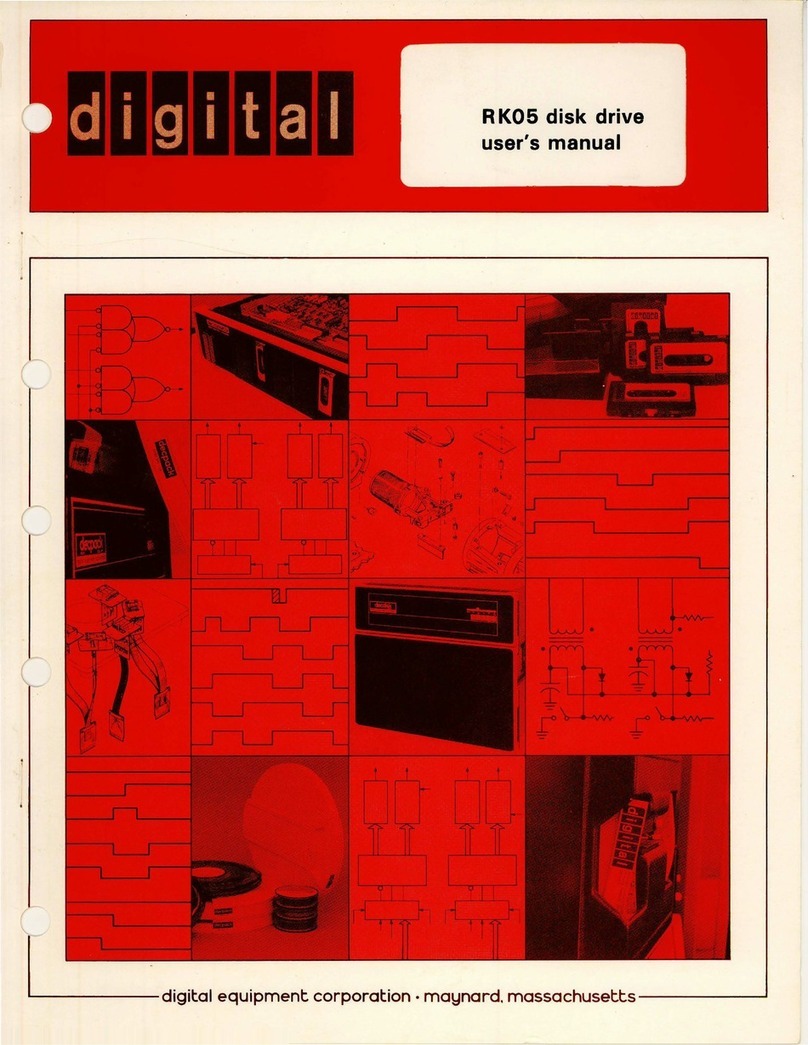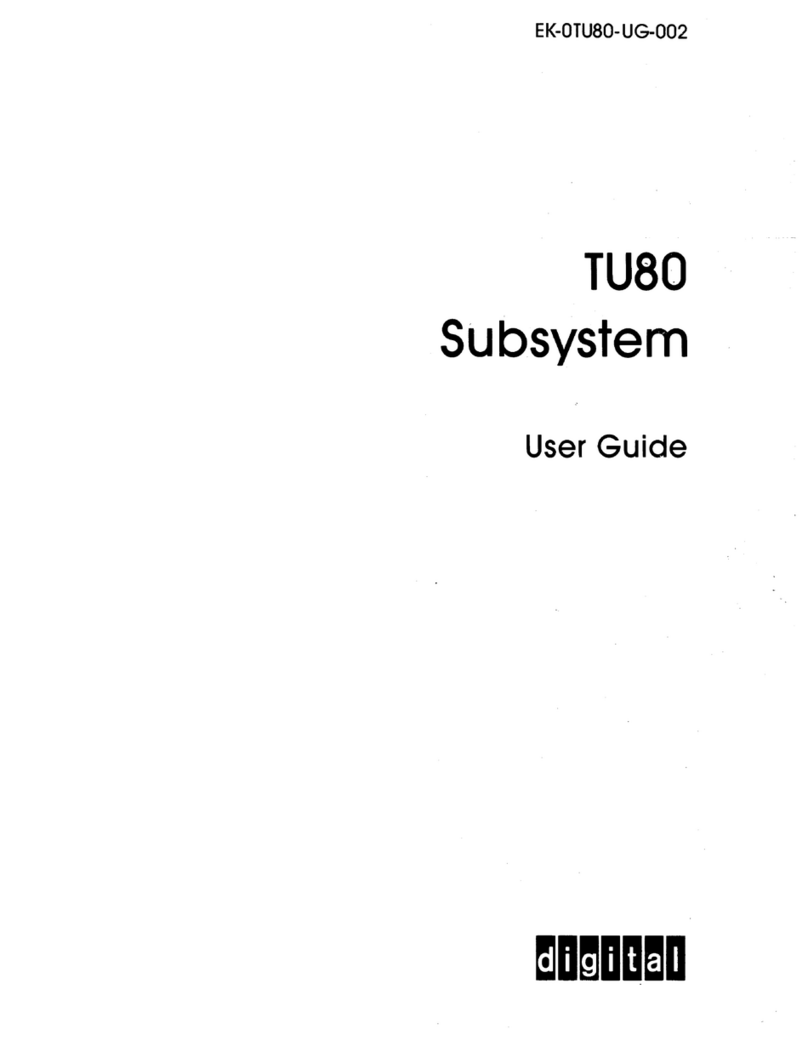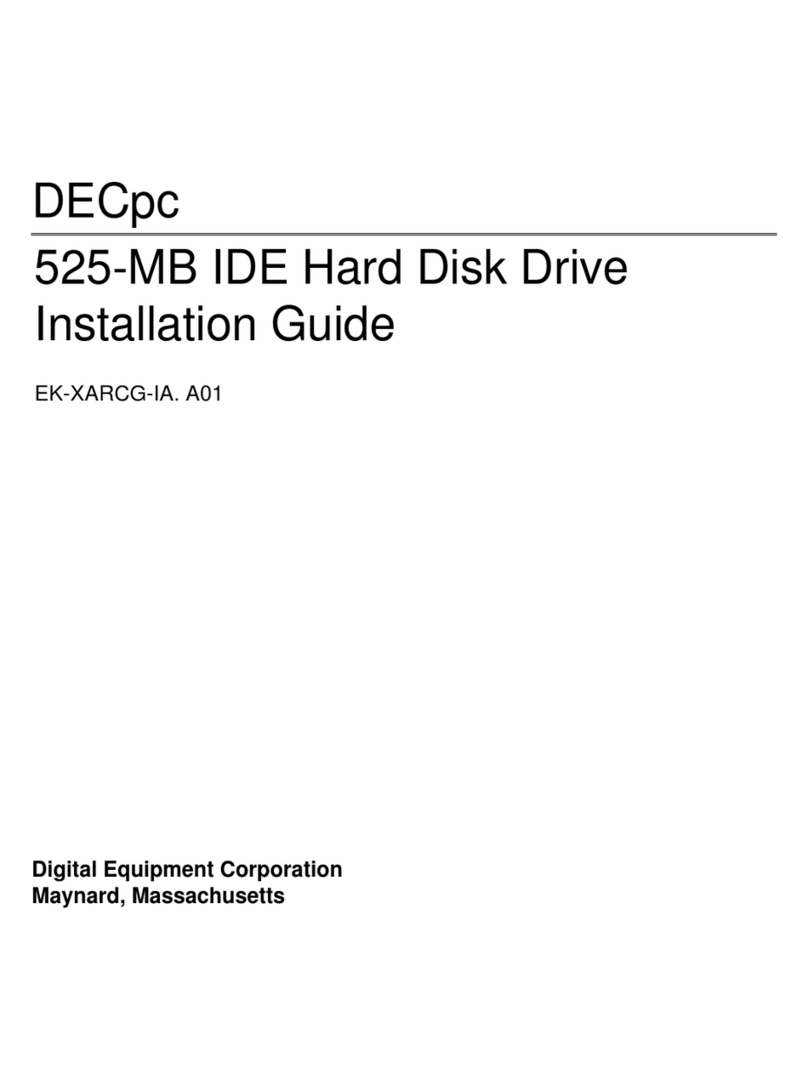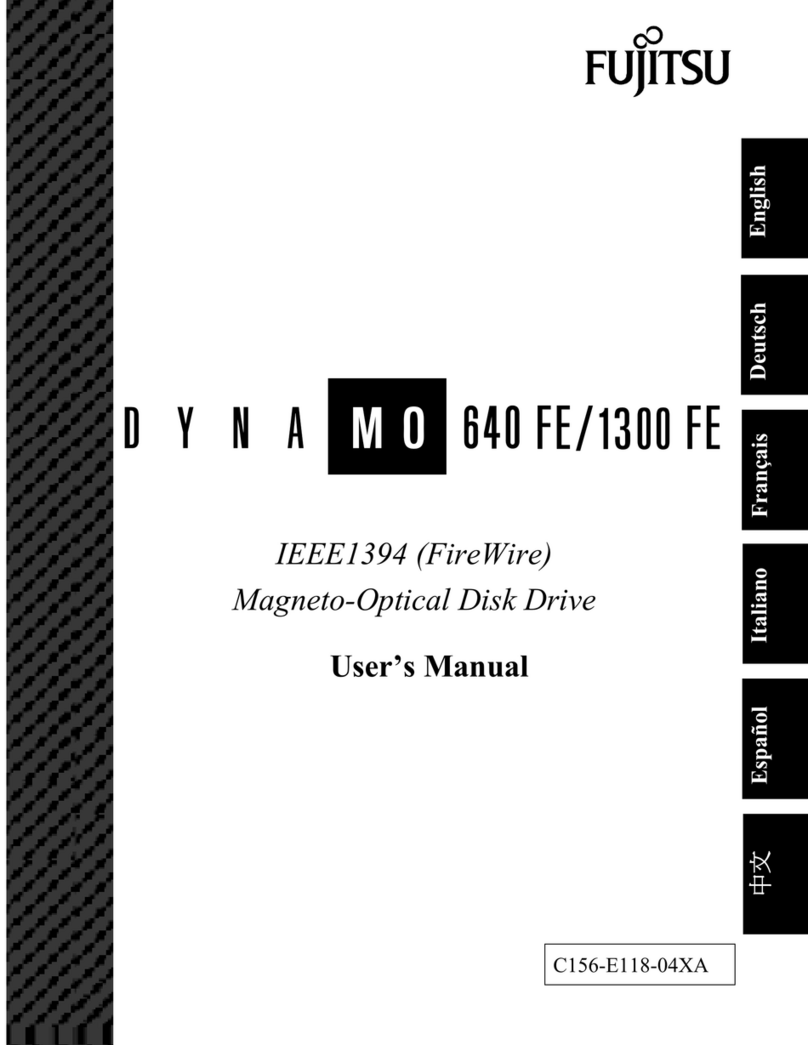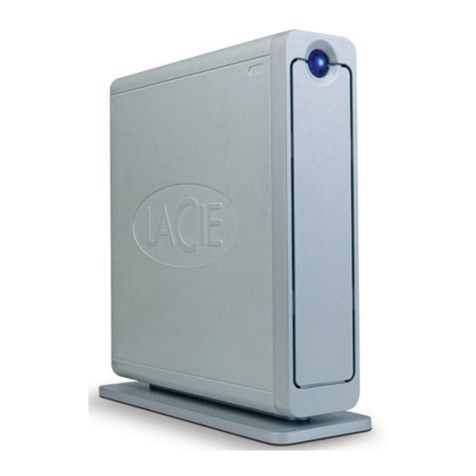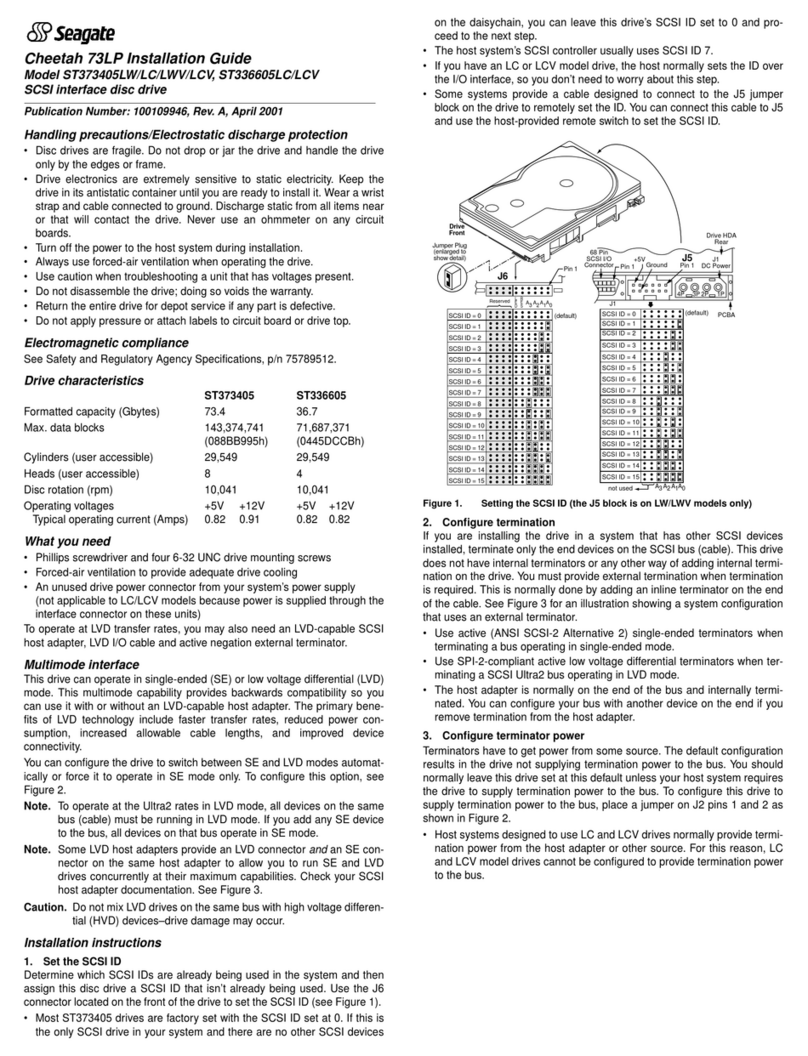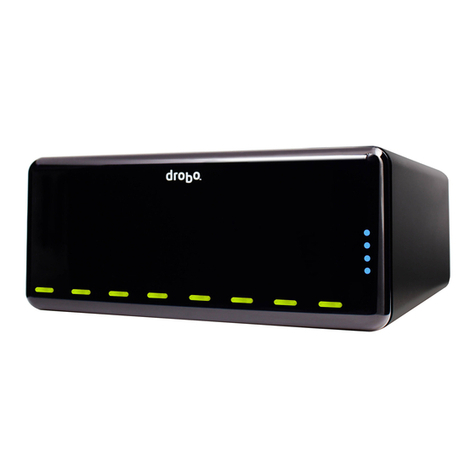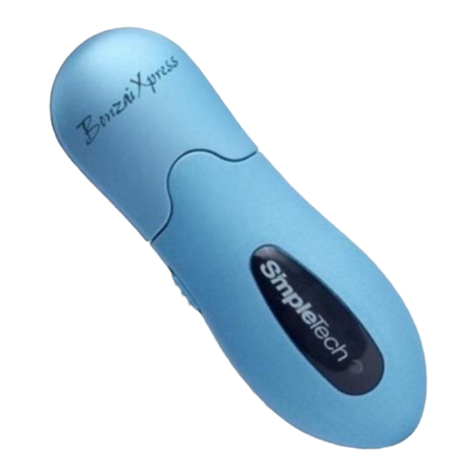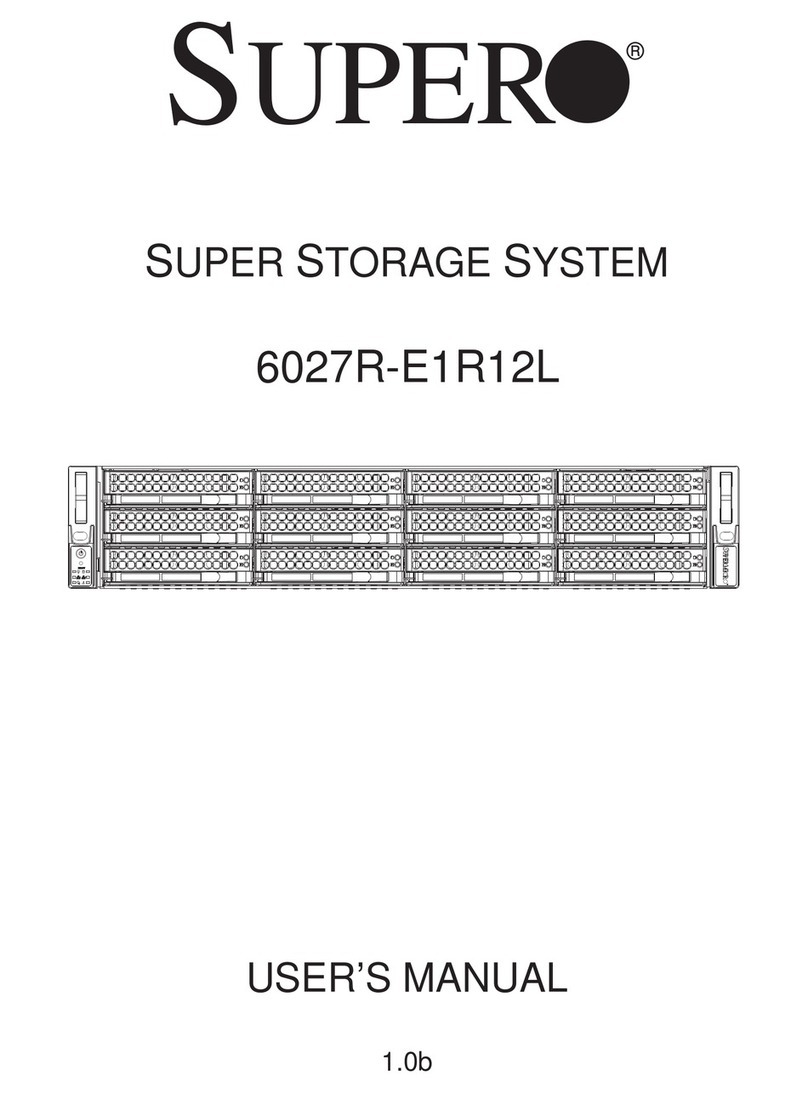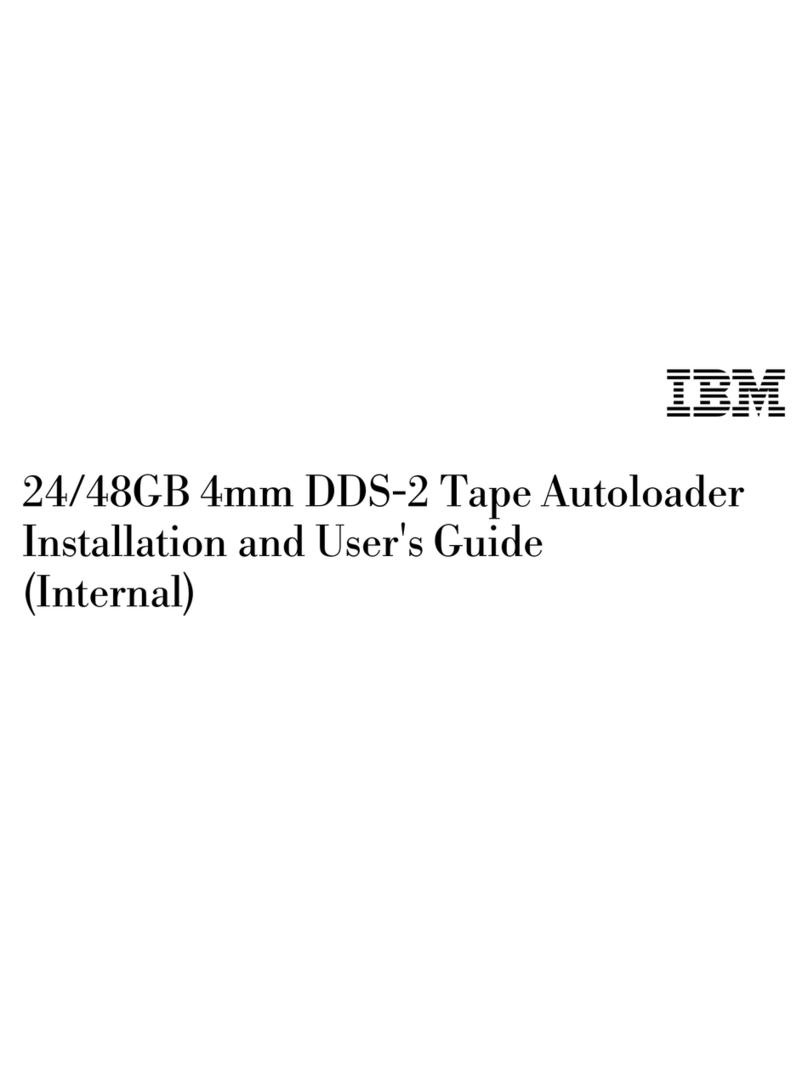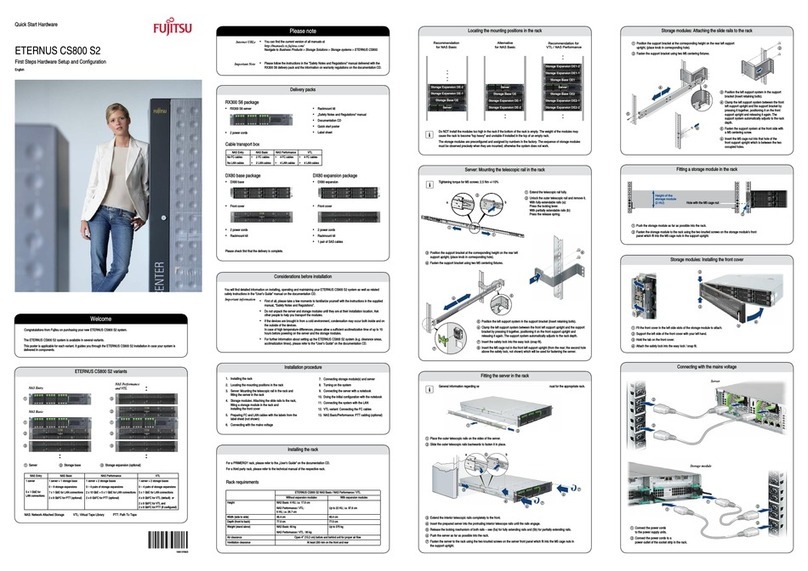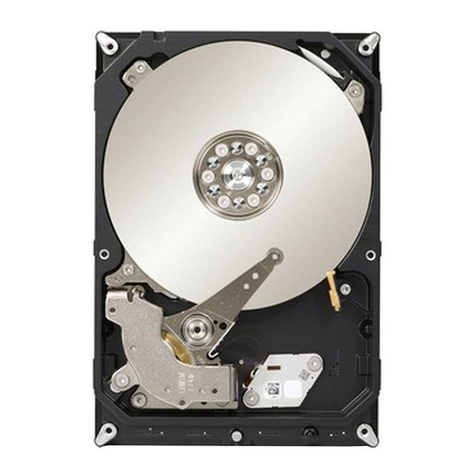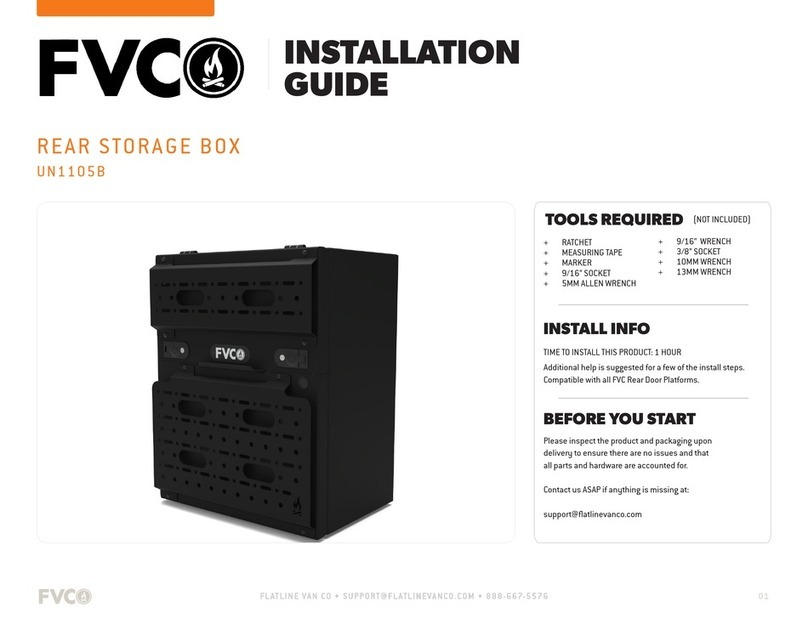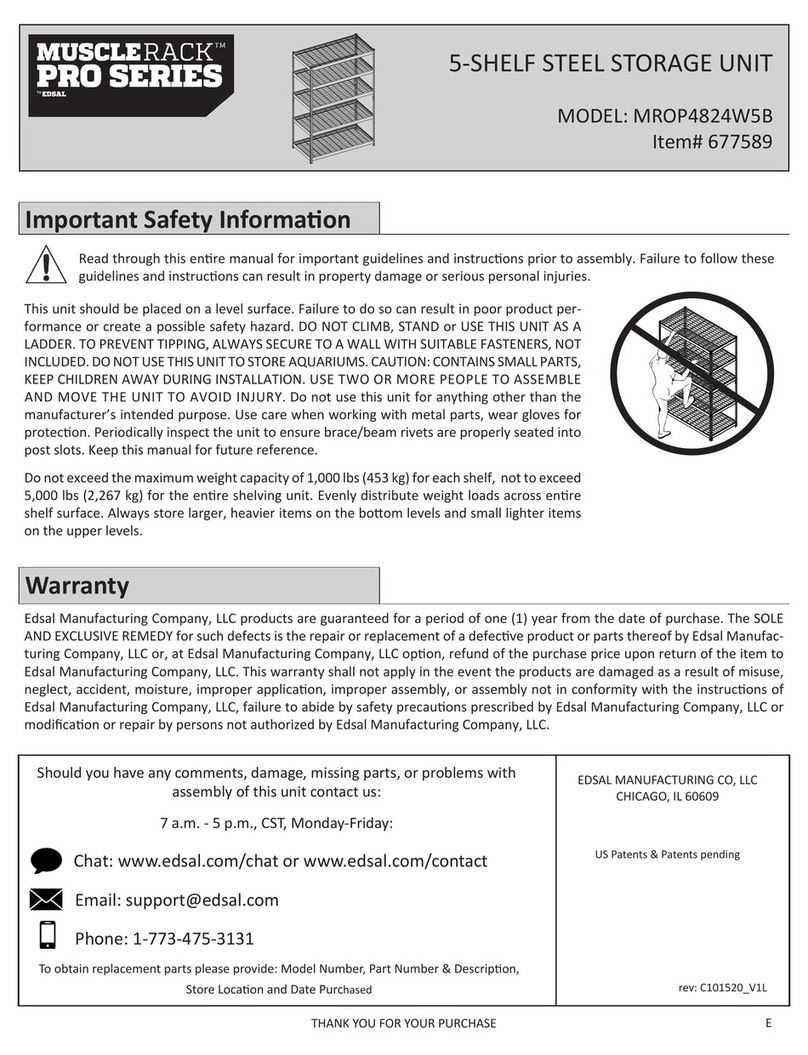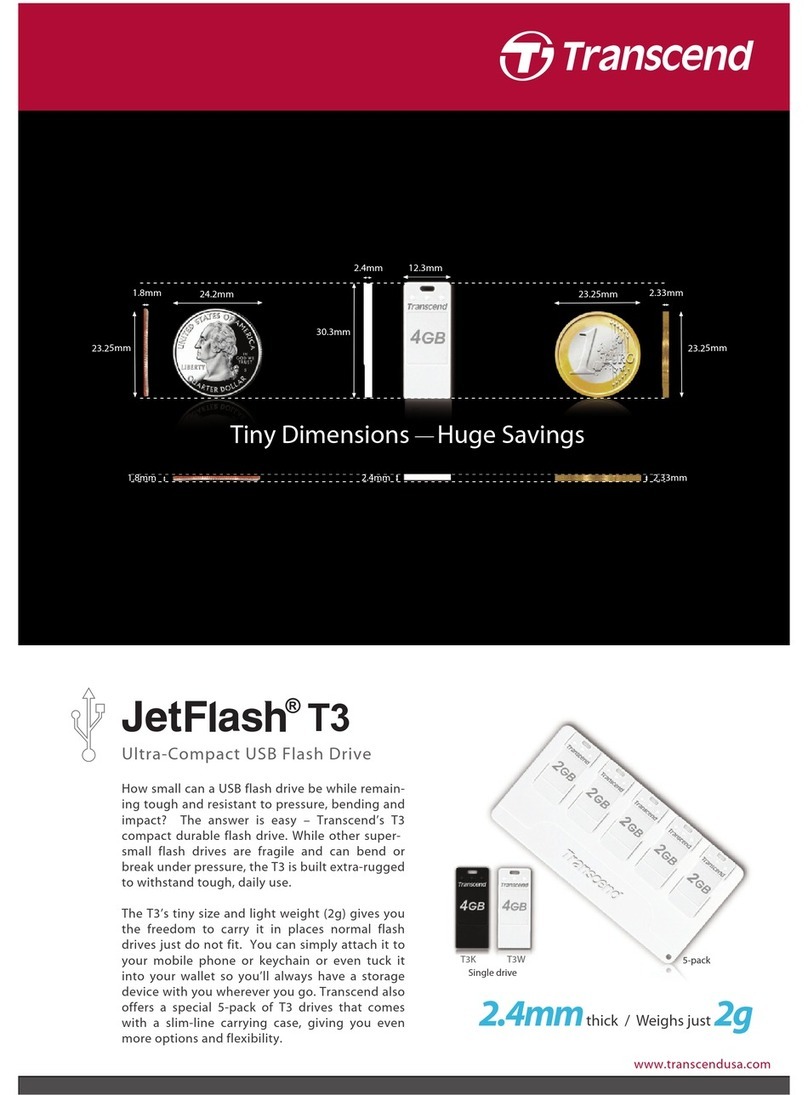DEC RAID Array 3000 storage subsystem User manual

RAID Array 3000 Storage
Subsystem
Hardware User’s Guide
EK–SMCPO–UG. A01
Digital Equipment Corporation
Maynard, Massachusetts

First Edition, January 1998
The disclosure of this information does not grant to the user a license under any patents,
pending patents, trademarks, or copyrights or other rights of Digital Equipment
Corporation, or of any third party.
This software is proprietary to and embodies the confidential technology of Digital
Equipment Corporation.
Possession, use or copying of the software described in this publication is authorized
only pursuant to a valid written license from Digital Equipment Corporation or an
authorized sublicensor.
Digital Equipment Corporation makes no representation that the use of its products in
the manner described in this publication will not infringe on existing or future patent
rights, nor do the descriptions contained in this publication imply the granting of
licenses to make, use, or sell equipment or software in accordance with the description.
The following are trademarks of Digital Equipment Corporation:
DEC, RAID Array 3000, StorageWorks, and the Digital Logo.
UNIX is a registered trademark in the United States and other countries, licensed
exclusively through X/Opin Company, Ltd..
All other trademarks and registered trademarks are the property of their respective
owners.
©Digital Equipment Corporation 1997. All Rights Reserved
Printed in USA

EK–SMCPO–UG. A01 iii
Contents
Revision Record ..............................................................................................ix
About This Guide ...........................................................................................xi
1 Product Overview
1.1 Product Description...............................................................................1–1
1.2 Pedestal Features...................................................................................1–4
1.3 Pedestal Cabinet....................................................................................1–4
1.4 Pedestal Components ............................................................................1–6
1.4.1 StorageWorks Building Blocks (SBBs)..............................................1–6
1.4.2 RAID Array Controller......................................................................1–6
1.4.3 Pedestal Power Supplies ....................................................................1–7
1.4.4 Uninterruptable Power Supply ...........................................................1–7
1.4.5 Environmental Monitor Unit (EMU)..................................................1–8
1.4.6 UltraSCSI Bus ...................................................................................1–9
1.5 Specifications......................................................................................1–12
2 RAID Array Controller
2.1 Controller Overview..............................................................................2–1
2.2 Controller Features................................................................................2–2
2.3 Controller Reset and LED Indicators.....................................................2–6
2.4 Flexible RAID Set Configuration..........................................................2–7
2.5 Performance Enhancements ..................................................................2–8
2.5.1 Custom Components..........................................................................2–8
2.5.2 Efficient Write and Read Algorithms.................................................2–8
2.6 RAID Levels Supported......................................................................2–10
2.6.1 RAID 0............................................................................................2–11
2.6.2 RAID 1............................................................................................2–13
2.6.3 RAID 0+1........................................................................................2–13
2.6.4 RAID 4............................................................................................2–15

RAID Array 3000 Storage Subsystem
iv EK–SMCPO–UG. A01
2 RAID Array Controller (continued)
2.6.5 RAID 5............................................................................................2–16
2.6.6 JBOD ..............................................................................................2–18
2.7 System Parameters.............................................................................. 2–18
2.8 Redundant Operation..........................................................................2–20
2.8.1 Initialization....................................................................................2–20
2.8.2 Message Passing..............................................................................2–20
2.8.3 Failover...........................................................................................2–20
2.9 Environmental ....................................................................................2–21
2.9.1 Backup Power Management............................................................ 2–21
2.9.2 Voltage Monitoring.........................................................................2–22
2.9.3 Temperature Monitoring..................................................................2–24
3 Maintenance
3.1 Introduction..........................................................................................3–1
3.2 Pedestal Status and Power LEDs...........................................................3–2
3.3 SBB Status LEDs..................................................................................3–2
3.4 Controller LEDs ...................................................................................3–3
3.5 EMU Error Reporting ...........................................................................3–4
3.6 EMU Error Conditions..........................................................................3–4
3.6.1 Replacing Components (FRU’s)........................................................3–5
3.6.2 Removing the Pedestal Door .............................................................3–5
3.6.3 Replacing an SBB .............................................................................3–6
3.6.4 Replacing a Power Supply.................................................................3–7
3.6.5 Replacing the RAID Array Controller ...............................................3–8
3.6.6 Replacing the EMU Board.................................................................3–9
3.6.7 Replacing the UPS ..........................................................................3–11
3.7 Differential/Wide UltraSCSI Bus........................................................3–11
3.7.1 Reconfiguring the SCSI Bus............................................................3–12
3.8 Replacing the Controller Memory Cache Modules.............................. 3–16

Contents
EK–SMCPO–UG. A01 v
4 Expansion Pedestal Option
4.1 Product Description...............................................................................4–1
4.2 Expansion Pedestal Cabinet...................................................................4–2
4.3 Expansion Pedestal Components...........................................................4–4
4.4 Reconfiguring Base Pedestal UltraSCSI Bus .........................................4–5
5 Second Controller Option
5.1 Introduction...........................................................................................5–1
5.2 Installation Procedure............................................................................5–2
Figures
1–1 RAID Array 3000 Pedestal Enclosure (Drives Optional) .......................1–2
1–2 Pedestal Front Panel Major Components...............................................1–5
1–3 Pedestal Rear Panel Power Supplies......................................................1–5
1–4 EMU Circuit Board Location................................................................1–8
1–5 Pedestal Rear Panel Components...........................................................1–9
1–6 UltraSCSI Bus Configuration Switch...................................................1–10
1–7 Slot Locations and SCSI ID Addresses................................................1–10
1–8 Slot Locations and SCSI ID Addresses................................................1–11
2–1 Bridging the Gap Between the Host and the Pedestal ............................2–2
2–2 Units Created from Storagesets, Partitions, and Disk Drives..................2–3
2–3 Controller Front Panel...........................................................................2–7
2–4 RAID 0 Write......................................................................................2–12
2–5 Diagram of a RAID 1 Write................................................................2–13
2–6 Diagram of a RAID 0+1 Write............................................................2–14
2–7 Diagram of a RAID 4 Write................................................................2–15
2–8 Diagram of a RAID 5 Write................................................................2–17
3–1 Pedestal Status LEDs ...........................................................................3–2
3–2 Disk Drive Status LEDs ........................................................................3–3
3–3 Removing Pedestal Door.......................................................................3–5
3–4 Replacing an SBB.................................................................................3–7
3–5 Replacing a Power Supply.....................................................................3–8
3–6 Removing the Controller from the Pedestal...........................................3–9
3–7 Remove EMU Connector Nuts............................................................3–10

RAID Array 3000 Storage Subsystem
vi EK–SMCPO–UG. A01
Figures (continued)
3–8 Remove Screw and Panel.................................................................... 3–14
3–9 Location of SCSI Bus Configuration Switch....................................... 3–15
3–10 Configuration Switch..........................................................................3–15
3–11 Remove Controller..............................................................................3–16
3–12 Release Locking Clips ........................................................................3–17
3–13 Remove Installed Memory Modules....................................................3–17
3–14 Install Replacement Modules..............................................................3–18
3–15 Pivot Module Down to Secure ............................................................3–19
4–1 Expansion Pedestal...............................................................................4–1
4–2 Expansion Pedestal Slot Locations and ID Addresses............................4–3
4–3 Rear Panel Power Supplies ...................................................................4–4
4–4 EMU Circuit Board Location................................................................4–5
4–5 Remove Side Cover from Base Pedestal ...............................................4–7
4–6 Remove SCSI Bus Terminator..............................................................4–7
4–7 Disconnect SCSI Cable.........................................................................4–8
4–8 Connect SCSI Jumper...........................................................................4–8
4–9 Remove Connector Knockout Plate.......................................................4–9
4–10 Connect SCSI Cable ...........................................................................4–10
4–11 Set Configuration Switch to 7.............................................................4–10
4–12 Configuration Switch..........................................................................4–11
4–13 Reconfigured SCSI Bus Addresses......................................................4–11
4–14 Connect SCSI Cable Between Pedestals..............................................4–12
4–15 Power Cable Connections...................................................................4–13
4–16 Transfer Drives from Base to Expansion Pedestal...............................4–14
5–1 Second Controlle Slot Position..............................................................5–2
5–2 Insert Module into SIMM Connector ....................................................5–3
5–3 Pivot Module Down to Seat..................................................................5–4
5–4 Remove Controller from Top Slot.........................................................5–4

Contents
EK–SMCPO–UG. A01 vii
Tables
1–1 RAID Array 3000 Part Numbers and Model Descriptions......................1–3
1–2 Pedestal Specifications........................................................................1–12
1–3 Pedestal Physical and Power Specifications.........................................1–13
2–1 Controller Specifications.......................................................................2–4
2–2 LED/Reset Switch Interface..................................................................2–6
2–3 RAID Levels Supported......................................................................2–10
2–4 Pedestal RAID Set Restrictions...........................................................2–10
2–5 RAID 0+1 Example.............................................................................2–14
2–6 System Parameters..............................................................................2–19
2–7 Backup Power Management................................................................2–21
2–8 Acceptable System Voltage Levels .....................................................2–22
2–9 Acceptable Termination Voltage Levels..............................................2–23
2–10 Acceptable 12 Volt Levels ..................................................................2–23
2–11 Acceptable External Temperature Voltage Levels...............................2–24
2–12 Acceptable Board Temperature Voltage Levels...................................2–24
3–1 Disk Drive SBB Status LEDs................................................................3–3
3–2 SCSI Bus Length and External Cables.................................................3–11
3–3 Assigned Slot Device Addresses in the Pedestal..................................3–11


EK–SMCPO–UG. A01 ix
Revision Record
This Revision Record provides a concise publication history of this guide. It lists the
revision levels, release dates, and reasons for the revisions.
The following revision history lists all revisions of this publication and their
effective dates. The publication part number is included in the Revision Level
column, with the last entry denoting the latest revision. This publication supports
the StorageWorks RAID Array 3000 Storage Subsystem.
Revision Level Date Summary of Changes
EK–SMCPO–UG. A01 January 1998 Original release.


EK–SMCPO–UG. A01 xi
About This Guide
This section identifies the audience of this guide and describes the contents (chapter-by-
chapter) and structure. In addition, this section includes a list of associated documents
and the conventions used in this guide.
Intended Audience
This guide is intended for installers and operators of the RAID Array 3000
storage subsystem. Installing the subsystem requires a general understanding of
basic SCSI terminology and SBus product installation procedures.
Document Structure
This guide contains the following chapters:
Chapter 1: Product Overview
Product Overview provides an overview and a physical hardware description of
the single pedestal RAID Array 3000 storage subsystem. It includes the major
features, a brief description of the major components, and the specifications for
the pedestal.
Chapter 2: RAID Array Controller
RAID Array Controller describes the major features and characteristics of the
controller in the RAID Array 3000. It also lists the RAID levels supported by the
subsystem and a brief description of each level. Redundant operation and
environmental considerations (i.e. backup power management, voltages, and
temperature) are covered at the end of the chapter.
Chapter 3: Maintenance
Maintenance describes how to interpret the status and power LEDs on the
pedestal as a troubleshooting aid in case of a problem. The chapter also describes
how to replace a Field Replaceable Unit (FRU) in the pedestal, how to re-
configure the SCSI bus, and how to add or replace a memory SIMM module in
the RAID controller.

RAID Array 3000 Pedestal Enclosure
xii EK–SMCPO–UG. A01
Chapter 4: Expansion Pedestal Option
Expansion Pedestal Option describes the major features and characteristics of
the pedestal expansion kit option. It also explains how to reconfigure the SCSI
bus in the base pedestal to accommodate the added storage capability of the
expansion pedestal.
Chapter 5: Second Controller Option
Second Controller Option describes how to install a second controller in the
pedestal for redundancy.
Associated Documents
In addition to this guide, the following documentation is useful to the reader:
Table 1 Associated Documents
Document Title Order Number
Stora
g
eWorks RAID Arra
y
3000 Confi
g
uration and
Maintenance Guide EK–SMCS2–UG
Installation Instructions for the RAID Arra
y
3000 Pedestal
Expansion Kit Option Product Note EK–SMCPM–PN
Installation Instructions for the RAID Arra
y
Replacement
Controller – SWXRC-03 EK–SMCPL–PN
Conventions
This guide uses the following documentation conventions:
Table 2 Style Conventions
Style Meaning
plain monospace type Text
boldface type For the first instance of terms being
defined in text, or both.
italic type For emphasis, manual titles, chapter
summaries, keyboard key names
.

About This Guide
EK–SMCPO–UG. A01 xiii
Conventions (continued)
Table 3 Nomenclature Convention
RAID Advisory Board Description RAID Array 3000 Usage
RAID 0 STRIPset
RAID 1 MIRRORset
RAID 0+1 STRIPED MIRRORset
RAID 4 STRIPED with a Fixed parity drive
RAID 5 STRIPED with a Floating parity drive
Support and Services
Who to contact in the Americas
Information and Product Questions: Local Sales Office / StorageWorks Hotline
1-800-786-7967
Installation Support: Contact the DIGITAL Distributor where the
Storage Solution was Purchased / Local Digital
Sales Office.
DIGITAL Multivendor Customer Service (MCS):
Installation Contact the DIGITAL Customer Support Center
(CSC).
Warranty Contact the DIGITAL Customer Support Center
(CSC) for warranty service after solution is
installed and operating.
Remedial Contact the DIGITAL Customer Support Center
(CSC)
Note: A Service Contract is recommended when
the equipment is out of warranty. Contact the
local DIGITAL Sales Office.
Customer Support Center (CSC) 1 800-354-9000

RAID Array 3000 Pedestal Enclosure
xiv EK–SMCPO–UG. A01
Who to contact in Europe
Information and Product Questions: Contact the DIGITAL Distributor or reseller
Installation Support and Installation: Contact the DIGITAL Distributor or reseller from
whom the Storage Solution was purchased.
For Warranty Service See the Warranty Card packaged with the
product.
For Remedial Service Contact the DIGITAL Distributor or reseller from
whom the Storage Solution was purchased.
Note: A Service Contract is recommended
when the equipment is out of warranty.
Who to contact in Asia Pacific
For all services, contact the DIGITAL Distributor or reseller from whom the
equipment was purchased

EK–SMCPO–UG. A01 1–1
1
Product Overview
This chapter provides an overall description of the RAID Array 3000 storage subsystem
and its components. A list of technical and environmental specifications is located at the
end of the chapter.
NOTE
This guide is the Hardware User’s Guide. For con-
figuration information, refer to the
Getting Started
RAID Array 3000 for Windows NT – Intel Installa-
tion Guide
and the
StorageWorks Command Con-
sole (SWCC) 2.0 User’s Guide.
1.1 Product Description
The RAID Array 3000 storage subsystem (Figure 1–1) is a desk-side subsystem
offering the basic components required to create a user-designed storage array
with two 16-bit, differential UltraSCSI bus host interfaces. The pedestal can ac-
commodate up to seven 3½-inch storage devices. The devices, referred to as
StorageWorks Building Blocks or SBBs, are disk drives from the StorageWorks
family of storage devices. The release note that accompanies the subsystem lists
the software solutions and disk drives that are supported. A battery backup sub-
system is included as part of the pedestal enclosure in the form of a free-standing
UPS (Uninterruptable Power Supply). In case of a power failure, the UPS pro-
vides a temporary backup for cache while the subsystem flushes to disks.
The RAID Array 3000 offering also includes option kits designed to increase the
storage capacity and enhance the performance of the subsystem. The first is an
expansion pedestal (second enclosure) designed to increase the storage capacity
of the subsystem to a maximum of 14 drives. The pedestal expansion kit option
is described in detailed in Chapter 4 of this guide.
The second option allows the addition of a second RAID controller to the subsys-
tem for redundancy. The second controller operates in conjunction with the in-
stalled controller to protect data during a malfunction. Chapter 5 describes how
to install the redundant controller option and how to reconfigure the subsystem to
accommodate it.

RAID Array 3000 Storage Subsystem
1–2 EK–SMCPO–UG. A01
The RAID Array 3000 pedestal enclosure and its associated options are listed
and described in Table 1–1. Figure 1–1 shows the pedestal with a full comple-
ment of drives (optional) for completeness.
Figure 1–1 RAID Array 3000 Pedestal Enclosure (Drives Optional)
PEDESTAL
UPS
3000-01A
The RAID 3000 pedestal is equipped with a dual-channel RAID controller which
supports all of the UltraSCSI bus features. It also contains an Environmental
Monitor Unit (EMU) board for environmental monitoring and error detection.

Chapter 1. Product Overview
EK–SMCPO–UG. A01 1–3
Table 1–1 Pedestal RAID Array 3000 Part Numbers and Model Descriptions
DIGITAL Part No. Item Description
DS-SWXRA-GA RA3000 pedestal subsystem with one controller, 120 V.
Includes: Seven-slot pedestal for wide UltraSCSI SBBs, one
HSZ22 two-channel controller with 16 MB cache, Environmental
Monitor Unit (EMU), two 204 watt power supplies with fans, five
meter host SCSI cable (BN37A), BN38E-OB adapter, one 120-
volt Un-interruptable power suppl
y
(UPS), and North American
power cords. Disks are not included.
Requires: Solutions Software Kit for platform, host adapter, and
disks.
Options: Second HSZ22 controller, seven-disk SBB expansion
pedestal, and cache memory upgrade.
DS-SWXRA-GC RA3000 pedestal subsystem with one controller, 230 V.
Includes: Seven-slot pedestal for wide UltraSCSI SBBs, one
HSZ22 two-channel controller with 16 MB cache, Environmental
Monitor Unit (EMU), two 204 watt power supplies with fans, five
meter host SCSI cable (BN37A), BN38E-OB adapter, one 230-
volt Un-interruptable power suppl
y
(UPS), and North American
power cords. Disks are not included.
Requires: Solutions Software Kit for platform, host adapter, and
disks.
Options: Second HSZ22 controller, seven-disk SBB expansion
pedestal, and cache memory upgrade.
DS-HSZ22-AA Second HSZ22 controller with 16 MB of cache and two 16 MB
SIMMs for mirror cache, one BN37A-05 five-meter UltraSCSI
cable, and one BN38E-OB adapter.
DS-SWXRA-GD Expansion Pedestal (120/240 V) with slot space for seven addi-
tional UltraSCSI disk drives.
DS-SWXRA-GR Sin
g
le 204-watt power suppl
y
for RA3000, 120/230 V for on-site
spare.

RAID Array 3000 Storage Subsystem
1–4 EK–SMCPO–UG. A01
1.2 Pedestal Features
The major features of the pedestal are:
• Two differential 16-bit UltraSCSI host buses
• Seven 3½-inch disk drive SBB slots
• One dual-channel RAID array controller
• Second controller option for redundancy
• Expansion pedestal option allowing up to fourteen SBB slots in a dual-
pedestal subsystem configuration
• Memory cache expansion option for the controller
• Redundant power provided by two fan-cooled universal ac input power sup-
plies (50/60 Hz, 100 to 240 V ac)
• Cache backup provided by an external Uninterruptable Power Supply (UPS)
• Environmental monitor unit (EMU) for error detection
• The ability to hot swap SBBs without powering down the system
1.3 Pedestal Cabinet
The pedestal cabinet is a modular free-standing storage enclosure that is com-
pletely self contained. It has two fan-cooled power supplies, an internal EMU
circuit board, and a RAID array controller with front panel display and control.
Figure 1–2 shows the major components in the pedestal enclosure.
Figure 1–3 identifies the items on the rear panel power supplies. The character-
istics of the pedestal cabinet are outlined below.
• The disk drive storage capacity is seven 3½-inch disk drive SBBs
• The subsystem slots are numbered 0 through 6 from top to bottom
• There are two 68-pin high density female SCSI connectors on the rear panel
which interconnect the host system to the RAID controller in the pedestal
• The rear panel also contains an alarm switch, a UPS monitor connector, an
external fault condition connector, and a serial port connector (for controller
configuration)
• The pedestal is equipped with an internal configuration switch which sets the
SCSI ID addresses of the controller and the storage devices

Chapter 1. Product Overview
EK–SMCPO–UG. A01 1–5
Figure 1–2 Pedestal Front Panel Major Components
Figure 1–3 Pedestal Rear Panel Power Supplies

RAID Array 3000 Storage Subsystem
1–6 EK–SMCPO–UG. A01
1.4 Pedestal Components
The major components in the pedestal subsystem include:
• Dual-channel RAID array controller
• Two 16-bit single-ended split SCSI buses
• Environmental Monitor Unit (EMU)
• Two universal 50/60 Hz, 120 or 240 Vac power supplies
• Separate free-standing backup power supply (UPS)
1.4.1 StorageWorks Building Blocks (SBBs)
The pedestal has seven 3½-inch disk drive SBB slots. The number of drives that
make up each configuration of the array is left to the end user with a maximum
of seven storage devices.
1.4.2 RAID Array Controller
The controller contains two Wide/UltraSCSI/differential host channels and two
Wide/UltraSCSI/Single-Ended disk channels. In dual-controller configurations,
the controllers support fully automatic and smooth controller failover.
The controller supports one or two standard 72-pin cache SIMMs of up to
64 MB. In a redundant controller setup, both controllers must have identical
cache configurations and the total usable cache (per controller) will be half the
amount installed. Thus, in a single controller setup the maximum usable cache is
128 MB while a redundant setup has a maximum usable cache of 64 MB (per
controller).
The RAID Array controller contains the following features:
• Single PCB form factor for inclusion in the enclosure
• Support for dual hot-swap controller operation
• Dual differential Ultra-Wide SCSI host channels
• Dual single-ended Ultra-Wide SCSI disk channels
• RAID level 0, 1, 0+1, 4, 5, and JBOD support
• EMU support
• Cluster support for Windows NT
• 32 Logical Units (LUNs) per host channel (some operating systems may be
limited to 8)
• Support for Hot and Warm spare disks
• UPS backed write caching
This manual suits for next models
5
Table of contents
Other DEC Storage manuals


